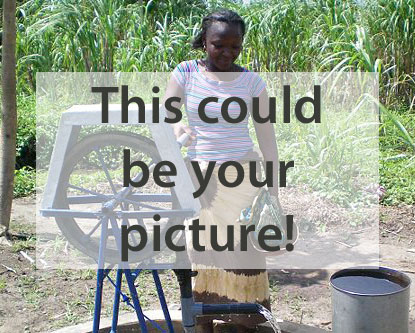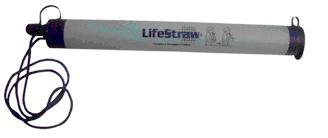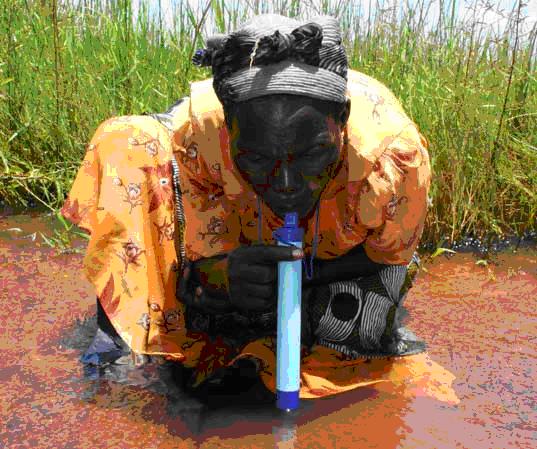Difference between revisions of "LifeStraw"
| Line 22: | Line 22: | ||
==Suitable conditions == | ==Suitable conditions == | ||
| − | [[Image:LifeStraw in use.jpg|thumb|right|150px| | + | [[Image:LifeStraw in use.jpg|thumb|right|150px|Woman using the lifestraw]] |
The lifestraw can only be used for low turbid water. The released amount of iodine in water treated from LifeStraw® is not normally damaging to human health. However, people with thyroid problems or allergic reaction to iodine must seek medical advice before using this tool | The lifestraw can only be used for low turbid water. The released amount of iodine in water treated from LifeStraw® is not normally damaging to human health. However, people with thyroid problems or allergic reaction to iodine must seek medical advice before using this tool | ||
Revision as of 09:57, 13 July 2010
LifeStraw® is a portable simple filtration device, which measures around 25 cm long and 29 mm in diameter, and filters up to 700 litres of water.
LifeStraw® contains a specially developed halogenated resin that kills bacteria and viruses on contact; a special chamber further increases the exposure of micro-organisms to the halogenated resin, thereby enhancing the killing effect. Micro-filters are used to remove all particles down to 15 microns. Granular activated carbon (silver-impregnated) adsorbs residual iodine thereby improving the taste of water.
It filters up to 700 litres of water and effectively removes most of the micro organisms responsible for causing waterborne diseases.
| Advantages | Disadvantages/limitations |
|---|---|
| - Does not require electricity - Does not require repair or spare parts |
- Not a good development tool as it lacks sustainability - Should not be shared |
History and social context
Suitable conditions
The lifestraw can only be used for low turbid water. The released amount of iodine in water treated from LifeStraw® is not normally damaging to human health. However, people with thyroid problems or allergic reaction to iodine must seek medical advice before using this tool
A model applicable at a family level does exist.
|
|
Technical specification
Operation
Place LifeStraw® in water and sip through the mouthpiece. Regularly blow through the LifeStraw® after drinking to keep the filters clean and to prevent them from clogging. To clean, wipe your LifeStraw® with a soft cloth
Treatment Efficiency
The University of North Carolina evaluated the performance of LifeStraw® personal water filter with regard to reduction of bacteria and viruses, level of iodine release and silver concentration in the filtered water. LifeStraw®:
- removes 99,9999% of waterborne bacteria
- removes more than 98% of waterborne viruses
- removes particles down to 15 microns
Maintenance
The filterpen is quite sensitive to shocks, so avoid dropping or collisions. However, as far as proper maintenance is conducted, no real damage should occur.
Manufacturing
Vestergaard SA Tested by the University of North Carolina. LifeStraw® can be donated through various non profit organisations.
Estimated Lifespan
LifeStraw® filters up to 700 litres of water. If we assume that the daily water consumption of a person is 2 litres, then the life span is nearly 1 year.
Shelf-life is 2 years at 25°C or 1 year at 30°C.
Cost
| Capital cost | Operating cost | Replacement cost | Estimated 5 year cost | Cost / metre cubed treated |
|---|---|---|---|---|
| US$4 = €2,85 | US$ 0 | US$ 0 | US$ 12-30 | US$5,71 = €4,08 |
Country experiences
Manuals
Movies
Footnotes
Acknowledgements
References

|


